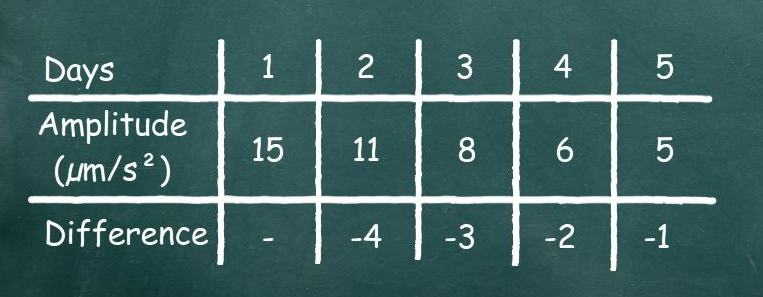Negative Numbers in Digital Agriculture
The Role of Digital Agriculture in Pest Control
Did you know that globally, between 10 and 28 percent of crop production is lost to pests? This is a huge number of lost food, and it is a good idea to use technology to reduce this number. One of the tasks of digital agriculture is reducing crop losses with technology. Mathematics plays a significant role here, and negative numbers are especially useful. Let’s take a closer look at how they help us understand pests’ behavior and effectively combat them.
The Role of Negative Numbers Exemplified
Pest organisms, when feeding on leaves, produce very small vibrations (measured in micrometers per second squared, μm/s2). Special sensors, called bioacoustic sensors, can detect these subtle vibrations, helping understand pests’ behavior.
Suppose we measure vibrations produced by fruitworms over five consecutive days. On the first day, the average measured amplitude of vibration is 15 μm/s2. On the second day, it decreases to 11 μm/s2, then to 8, 6, and 5 μm/s2 on the fifth day, as shown in the table below.

Now, let’s calculate the change in amplitudes over these days. The change between the 2nd and the 1st day is:
11–15=–4
This is a negative number. Note that the minuend is the second day, and the subtrahend is the first day because we need to understand the difference compared to the past (i.e., the previous day).
The difference between the 3rd and 2nd day is:
8–11=–3
This is again a negative number. This negative change in amplitude holds valuable information about the behavior of harmful pests: it indicates that pests are moving away from the sensor — information that might be very useful to a farmer. For example, if a farmer has recently applied pesticides or insecticides, pests moving away from the sensor may indicate that the pesticide is effective. If the change of amplitude were positive, it would mean that pests are moving closer to the sensor.
Conclusion
This was a simple yet powerful example that showcased how both positive and negative numbers helped analyze pests’ behavior. Negative numbers are also used in many other situations when there’s a need to differentiate movement direction: back or forward, left or right, up or down.
As digital agriculture advances, more digital sensors will be embedded in soil and on plants. The data collected, with the integration of Artificial Intelligence, will be transmitted to specialized software, offering a wealth of information for analysis. And negative numbers will continue to help make this analysis.
References
We used following scientific articles to prepare this blog post:
Video Version
Those interested in knowing more are welcome to explore our video version of this article. It explains more about the field of bioacoustics, shows its applications, and explains the calculation of negative numbers in an animated manner. Preview the video below or subscribe to get access to our collection of full videos.
Further Reading
Interested in learning more about how negative numbers are used in real life? The following article will explain how negative numbers are used in weather forecasts:
